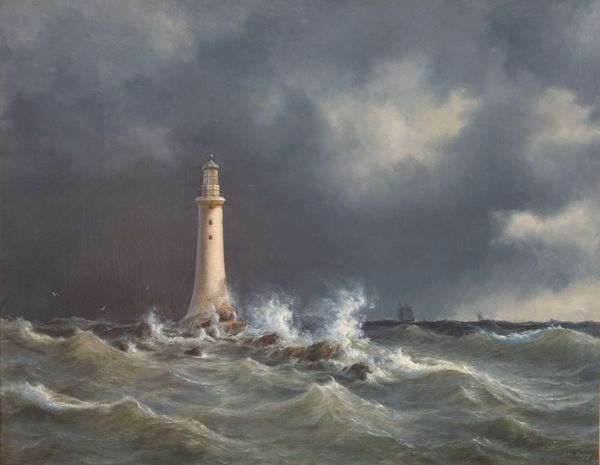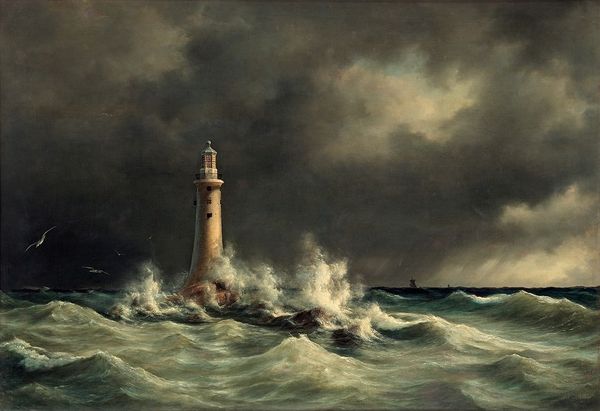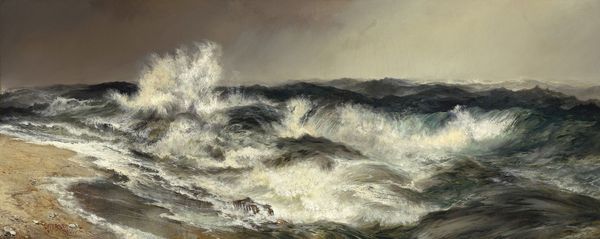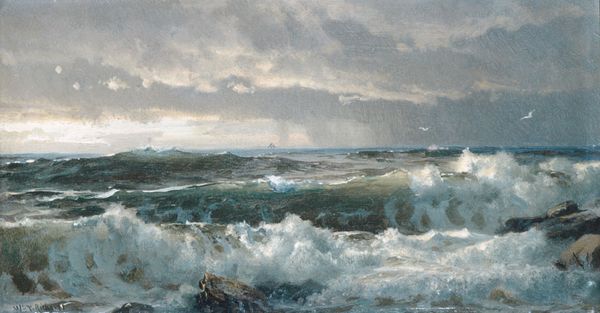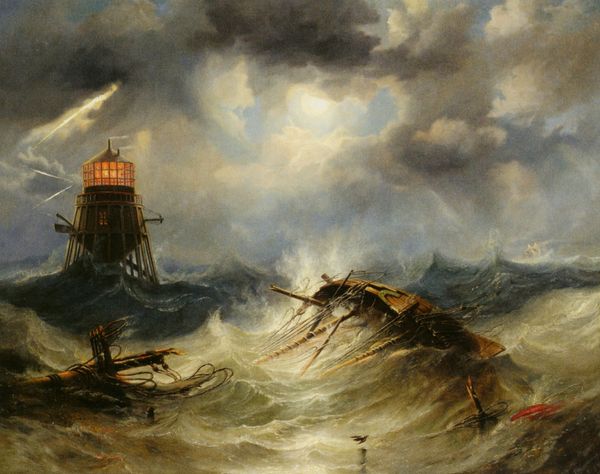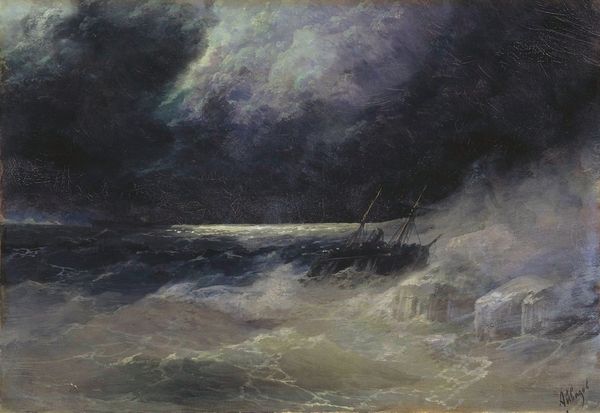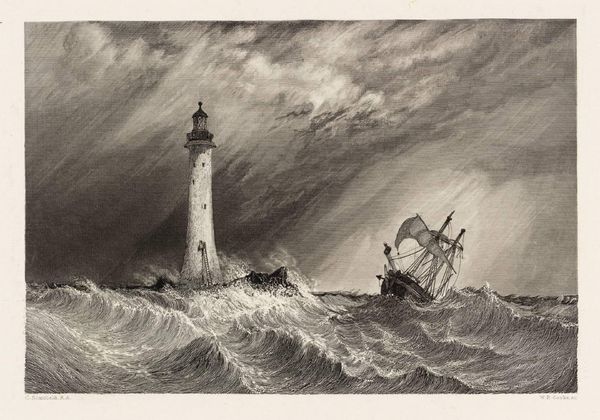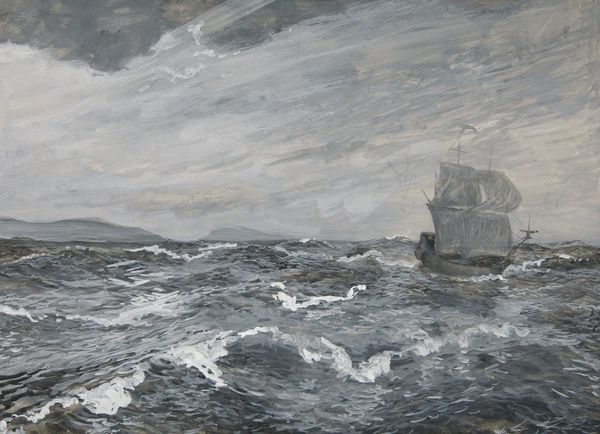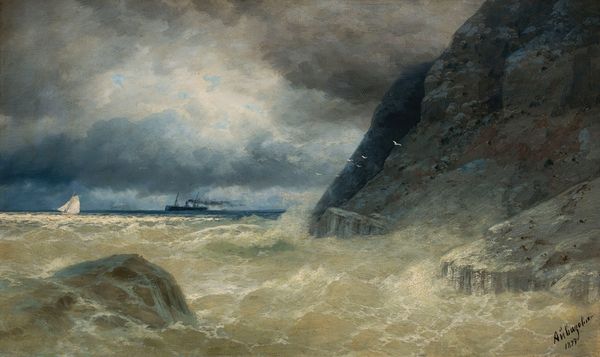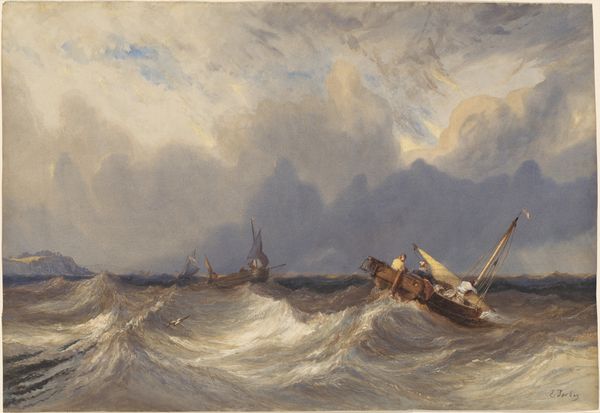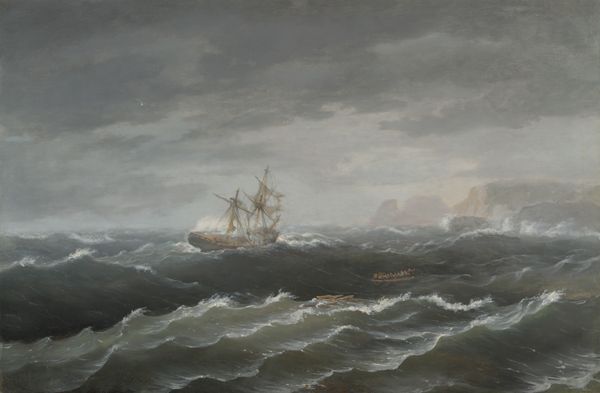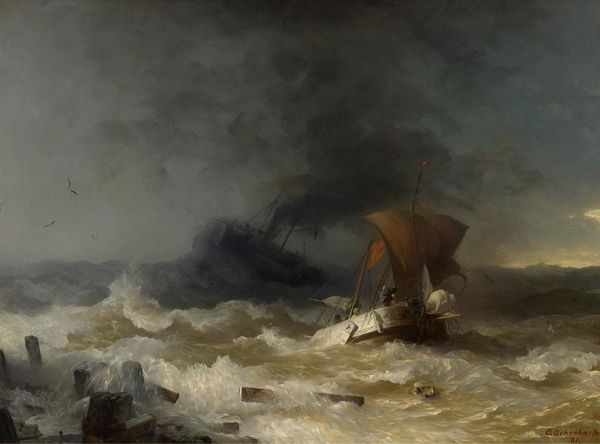
The Eddystone Lighthouse 1846
0:00
0:00
antonmelbye
National Gallery of Denmark (Statens Museum for Kunst), Copenhagen, Denmark
Copyright: Public domain
Editor: This is Anton Melbye’s “The Eddystone Lighthouse,” painted in 1846 using oil on canvas. It’s held at the National Gallery of Denmark. The painting's intense contrast immediately struck me – the sturdy lighthouse amidst a turbulent sea. What can you tell me about the composition? Curator: Note how the verticality of the lighthouse acts as the unwavering axis of the canvas. Consider also the dynamic arrangement of horizontal lines created by the waves and how that emphasizes the power of nature and the resilience of this architectural construction. Editor: It seems the waves, depicted with short, choppy strokes, surround and almost attack the lighthouse. The sky is a menacing gray... Do you find symbolism in those color choices? Curator: Indeed. The color palette, primarily somber greys and whites, reinforces the emotional tenor of the piece. What do you see in terms of lines, how do they function? Editor: Now I notice that, while there are short, choppy brushstrokes elsewhere, the lines composing the lighthouse are crisp and solid. It is built with vertical lines, adding to the sense of its strength. Curator: Precisely. The contrast in linework strengthens the piece. One could ask what happens to the subject if all of the brushstrokes were aligned with one another and followed the same formal qualities? Consider then the dialogue created by contrasting forms. What has the piece shown you regarding structure and materiality? Editor: I realize that Melbye wasn’t just documenting a lighthouse. It’s about the formal relationships between these visual components and the emotional effect that this piece provokes within me. Thank you! Curator: A rewarding observation that reminds us to keep looking.
Comments
No comments
Be the first to comment and join the conversation on the ultimate creative platform.
